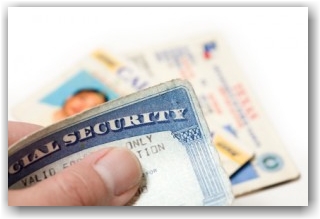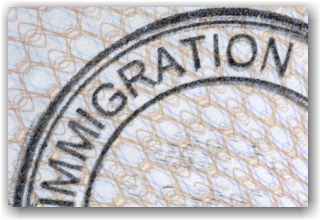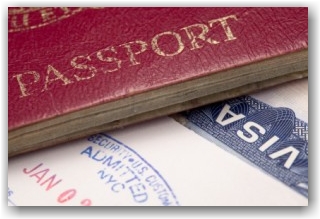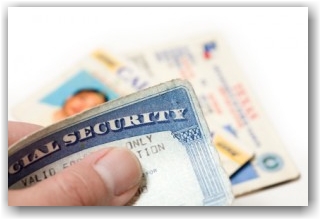August 24th, 2015
The new rule provides SSA and the public with different options for verifying an applicant’s identity and other eligibility factors, noting that it will continue to require the same evidence to establish citizenship, age and identity. The new rule will also remove the requirement that individuals seeking a replacement SSN card file an SS-5 form, allowing them instead to complete a “prescribed application,” which the agency said would simply be the application form — whether paper, online or another efficient, user friendly method. Additionally, the SSA will release, through a gradual, state-by-state rollout, an online application that will permit adult U.S. citizens who are not reporting any changes to their record to apply for replacement SSN cards electronically after registering through the “my Social Security” portal.
How will this change procedures for processing the I-9 Employment Eligibility Verification Form? The article states that employers are likely to find more rapid turnaround should employees lack a lost or misplaced social security card requiring reissuance. USCIS Form I-9 permits employers to initiate employment, in most instances, if hired employees can verify within three (3) days employment eligibility through the documentary requirements of USCIS Form I-9, including presentation of a valid social security card under “List C” of Form I-9.
::::::::
Immigration Compliance Group provides US inbound visa services to individuals and employers throughout the USA and abroad. We specialize in business immigration and have a depth of experience in the IT, healthcare, arts, entertainment and sports industries, amongst others. Our services include complex business visas for investors, multinational managers, skilled professionals, outstanding individuals of high achievement and PERM Labor Certification. We additionally provide employer compliance consulting services on proper I-9 (Employment Eligibility Verification) management, auditing, training, and work with our clients to develop a culture of immigration compliance.
Tags: Employer Compliance, Employment Verification, I-9 AUDIT, I-9 Form, I-9/E-Verify News, ICE, Legal Workforce, Social Security Card, SSA, USCIS
Posted in DACA | DAPA, Employer Compliance, I-9/E-Verify News, Social Security, USCIS | Comments Off on New Social Security Card Process to Commence Sept 9, 2015
August 9th, 2015
 We’re starting to intake alot of questions concerning these cards as they now filter through the system to employers charged with handling Form I-9 employment verification.
We’re starting to intake alot of questions concerning these cards as they now filter through the system to employers charged with handling Form I-9 employment verification.
Twelve states and the District of Columbia enacted laws to allow unauthorized immigrants to obtain a driver’s licenses. These states—California, Colorado, Connecticut, Delaware, Hawaii, Illinois, Maryland, New Mexico, Nevada, Utah, Vermont and Washington—issue a license if an applicant provides certain documentation, such as a foreign birth certificate, a foreign passport, or a consular card and evidence of current residency in the state. Eight of these states extended driving privileges in 2013. In 2015, Delaware and Hawaii enacted legislation to give unauthorized immigrants driving privileges.
Here are examples of some of the cards with various different annotations.
An employer is required to accept as a list B document an unexpired driver’s license or ID that meets the standard for I-9 purposes. What’s the standard? A photo and other identifying information such as, their name, date of birth, gender, height, eye color and address. The underlying issue here is state law vs. immigration (federal law) and USCIS regulations concerning Form I-9.
Both USCIS and OSC concur, despite the various different types of annotations that appear on driver authorization cards, that they meet the regulations for an acceptable List B document if they adhere to the standards mentioned above.
An employer is required to examine the documents presented by its employee and determine whether they meet Form I-9 requirements. If the employer accepts any document, including a state-issued license or driver authorization card, or other type of ID with a limiting notation as a List B document, the employer must also examine a List C document that evidences employment authorization in order to make a proper determination if the individual is eligible for employment.
Employers may reject a document if it does not reasonably appear to be genuine or to relate to the employee. Rejecting a document that satisfies Form I-9 requirements may constitute illegal discrimination under the Immigration and Nationality Act’s anti-discrimination provision or Title VII of the Civil Rights Act of 1964.
USCIS has published a set of
FAQs on this topic that contain critical information and should be read, discussed and made a part of your training program for those charged with processing I-9 forms. Should you have any questions on this matter or any other concerns regarding employer compliance issues, please feel free to contact us at
info@immigrationcompliancegroup.com or call
562 612.3996.
Tags: Driver Authorization Cards, Driver's License, Employer Compliance, I-9 Form, I-9/E-Verify News, ID Cards, ID Cards for Undocumented Immigrants, Immigration News, Legal Workforce, List B Documents
Posted in Employer Compliance, I-9/E-Verify News, ICE, Immigration News, OSC, Social Security, USCIS | Comments Off on Can Driver Authorization Cards be used as a List B Document for I-9 Employment Verification?
July 17th, 2015

USCIS released details of proposed new changes to the E-Verify program on June 8, 2015 that were published this week. The notice, found here, proposes several changes to E-Verify and seeks public comments until August 7, 2015 and links to new Q&A. These changes will affect all employer users, including Federal Acquisition Regulation (FAR) contractors.
The three critical changes entail:
1) Requirement that employers re-verify the continuing work authorization of employees within three “Employer” days of the expiration of the employee’s “last” grant of work authorization.
a) This requirement tracks the current continuing duty of employers to re-verify expiring work authorization of employees in Section 3 of the I-9 form or, in the alternative, to complete a new I-9.
b) This differs from the I-9 process in that the E-Verify time frame for re-verification of the employment authorization is three days after its expiration, whereby the I-9 regulations state that an employer re-verify the expiring work authorization of an employee on or before the day it expires. In E-Verify, the proposed process cannot be started until after the expiration of the employment authorization.
c) The re-verification requirement extends to employees hired before an employer began participating in the E-Verify program. Thus, the proposed change would require that employers re-verify an employee’s expiring work authorization regardless of whether they have previously created an E-Verify case for that employee or not. This again differs from the current E-Verify program rules that explicitly prohibit an employer verifying the work authorization of employees hired before the employer began participating in the program (with the exception of FAR E-Verify employers).
2) Requirement that employers print the re-verification confirmation page and retain it along with an employee’s I-9 records or record the E-Verify re-verification case number on the employee’s I-9 Form.
3) Provides a process for employees to seek review of E-Verify Final-Nonconfirmations.
::::::::
Immigration Compliance Group provides US inbound visa services to individuals and employers throughout the USA and abroad. We specialize in business immigration and have a depth of experience in the IT, healthcare, arts, entertainment and sports industries, amongst others. Our services include complex business visas for investors, multinational managers, skilled professionals, outstanding individuals of high achievement and PERM Labor Certification. We additionally provide employer compliance consulting services on proper I-9 (Employment Eligibility Verification) management, auditing, training, and work with our clients to develop a culture of immigration compliance.
Tags: Agriculture, E-Verify, Employer Compliance, FAR E-Verify, Federal Contractors, I-9 Compliance, I-9 Form, I-9/E-Verify News, ICE, Immigration News, Legal Workforce, OSC, Seasonal Workers, USCIS
Posted in Agriculture, Employer Compliance, Federal Contractors, I-9/E-Verify News, ICE, Immigration News, OSC, USCIS | Comments Off on E-Verify Announces Major Proposed Changes
June 20th, 2015
 Since early 2015, qualified California residents have been able to apply for and receive a driver’s license issued by the Department of Motor Vehicles without proving that their presence in the United States is authorized under federal law. All employers must accept the AB 60 driver’s license as a Form I-9 List B Identity document if the license reasonably appears to be genuine and to relate to the individual. As with all permissible List B driver’s licenses, the AB 60 driver’s license must contain either a photograph or list the individual’s name, date of birth, gender, height, eye color, and address. The AB 60 driver’s license only documents the employee’s identity; California employers must still examine a List C document that establishes employment authorization, such as a Social Security card or birth certificate.
Since early 2015, qualified California residents have been able to apply for and receive a driver’s license issued by the Department of Motor Vehicles without proving that their presence in the United States is authorized under federal law. All employers must accept the AB 60 driver’s license as a Form I-9 List B Identity document if the license reasonably appears to be genuine and to relate to the individual. As with all permissible List B driver’s licenses, the AB 60 driver’s license must contain either a photograph or list the individual’s name, date of birth, gender, height, eye color, and address. The AB 60 driver’s license only documents the employee’s identity; California employers must still examine a List C document that establishes employment authorization, such as a Social Security card or birth certificate.
View the Example of the AB-CA Driver’s License annotated with “Federal Benefits Apply”.
Tags: CA AB-60 Driver's License, DACA, Department Of Homeland Security (DHS), Employer Compliance, EMPLOYMENT ELIGIBILITY, I-9 Form, I-9/E-Verify News, ICE, Immigration News, Legal Workforce, OSC, Social Security, USCIS
Posted in DACA | DAPA, Employer Compliance, I-9/E-Verify News, ICE, Immigration Legislation, Immigration News, OSC, Social Security, USCIS | Comments Off on California New AB 60 Driver’s License: Is it Good for Employment Eligibility?
February 2nd, 2015

This is an excellent resource released by USCIS in both English and Spanish. You can also enter your email address and sign up for updates.
These flyers explain the guidelines that take effect for expanded DACA on Feb. 18, 2015, and how people can prepare for requesting DAPA once it becomes available in mid-to-late May.
Tags: DACA, DAPA, Executive Actions, Immigraiton Reform, Immigration News, USCIS, Work Authorization
Posted in DACA | DAPA, Immigration Legislation, Immigration News, USCIS | Comments Off on DACA | DAPA — Get the Facts Here
January 29th, 2015

It’s almost that time of year again for H-1B filing season FY 2016 (commencing April 1, 2015), and it’s not too early for employers to be discussing hiring needs with their management team and assessing where in the organization they wish to sponsor H-1B professionals, and identifying potential candidates that they may want to sponsor for H-1B status. This could include, for example, recent graduates employed pursuant to F-1 Optional Practical Training, foreign nationals in TN status that the company may wish to sponsor for permanent residence, and candidates in L-1 status working for other employers or in some other non-immigrant classification who would need to change their status to H-1B in order to extend their stay and accept new employment.
The H-1B job offer and the job description must be for a specialty occupation that requires a minimum of a bachelor’s degree or its foreign equivalent.
What is the definition of a specialty occupation? A specialty occupation requires the theoretical and practical application of a body of specialized knowledge along with at least a bachelor’s degree or its US equivalent. For example, architecture, engineering, IT, mathematics, physical sciences, social sciences, medicine and health, education, business specialties, accounting, law, and the arts are considered specialty occupations.
Small to medium-size companies are frequently asked to justify why the position requires someone with a bachelor’s degree and to explain, through various types of evidence including organizational charts, examples of work being produced, the education of previous employees in the position, etc., why their business is more unique than other similar businesses in their industry that they would require a candidate with a bachelor’s degree in a particular position.
Bachelor’s Degree equivalency can be attained through a single-source foreign degree that meets US standards, a combination of a degree and work experience, or a work experience alone equivalency that meets the “3 for 1” rule; namely, that 3 years of work experience is equivalent to 1 year of university level education (this requires an expert credential evaluation by a service or university that is authorized to evaluate work experience for degree equivalency).
Note: Bear in mind that if you have a skilled immigration professional that has a strategy in place for their green-card sponsorship (permanent residency), it is essential that the degree and its equivalency be carefully reviewed so that it will be compatible with the classification under which they will file their labor certification, the first step in the green-card process.
USCIS now requires very detailed job descriptions for H-1B visa petitions that contain the position summary, duties and responsibilities, as well as the percentage allocation spent on each job duty. It is hard to imagine that a job description with a 15-bullet point list of duties and a full page in length is insufficient, but when you work with a skilled immigration practitioner, this can be successfully argued against the O*NET occupational classification system and the Occupational Outlook Handbook, which is the primary source of job information for USCIS and the Department of Labor.
In summary: Employers need to be prepared with complete job descriptions for their H-1B prospective employees and document the need for a degreed professional thoroughly in their casework.
Discuss your H-1B requirements as well as any other business immigration matters by contacting us at info@immigrationcompliancegroup.com, or call 562 612.3996.
Tags: DOL, EAD, F-1 Students, H-1B Degree Requirements, H-1B Filing Season, H-1B Filing Tips, H-1B Job Descritions, H-1B Visa, OPT, Specialty Occupations, USCIS
Posted in Department Of Labor (DOL), H-1B Visas, Immigration News, Staffing Agencies, USCIS | Comments Off on H-1B Visas – The Job Description and Degree Requirement
January 26th, 2015

America’s Voice reports; we quote…
The New York Times has released a profile of journalist Jorge Ramos that underscores the political dangers Republicans have created by embracing anti-immigrant policies. Ramos explains the reasons why immigration is such a salient issue for him and many other Latino voters. As he tells Jackie Calmes of the Times:
“immigration is personal. Immigration is the issue that tells us who is with us and who is against us; there’s no question about it. And it’s very simple to understand why — half of all Latinos over 18 years of age were born outside the United States. It really makes no sense to attack them and criticize them if you want their vote.”
As former George W. Bush campaign advisor Matthew Dowd states:
Remember what L.B.J. said, ‘When you lose Walter Cronkite, you’ve lost the war’? [Ramos is] not only a journalist, he’s become the voice of the Latino constituency. And that’s where Republicans have to worry — you don’t want to lose Jorge Ramos.
Tags: Congress, Immigration Legislation, Immigration News, Immigration Reform, Jorge Ramos, Univision
Posted in Congress, Immigration Legislation, Immigration News | Comments Off on Voice of Latino Voters on Univision – Jorge Ramos
January 25th, 2015
The U.S. technology industry might finally get the immigration reform that it wants. Bipartisan Senate groups introduced two tech-focused bills this month. The Immigration Innovation Act – which increases the cap on H-1B Visas from 65,000 to 115,000, eliminates per-country limits on visa petitioners and lets spouses of H-1B visa holders work – came out of conversations with corporate tech leaders.
The Startup Act, which already has been introduced on three earlier occasions, creates a new visa category for foreign entrepreneurs.
 For more: http://www.bloombergview.com/articles/2015-01-22/obama-immigration-reform-h-b1-visas-and-silicon-valley
For more: http://www.bloombergview.com/articles/2015-01-22/obama-immigration-reform-h-b1-visas-and-silicon-valley
Tags: Congress, H-1B, High-Skilled Visas, Immigration Legislation, Immigration News, Immigration Reform, Startup Visa, The Immigration Innovation Act
Posted in Congress, H-1B Visas, Immigration Legislation, Immigration News | Comments Off on Obama, High-Skilled Visa Immigration and Silicon Valley
December 7th, 2014

On November 20, 2014, President Obama announced efforts to retool critical aspects of the immigration system—how we enforce immigration laws, how we process immigration benefits, how we encourage further business innovation, and how we welcome immigrants to this nation.
Following the address, executive agencies made available intra-agency memoranda and fact sheets detailing specific actions that have already been taken, or will be taken in the future in ten areas within the confines of the law. These actions generally involve border security, the current unlawfully present population, or future legal immigration.
Below we link to Fact Sheets that address the details that we are aware of at this time of the 10 Executive Action Initiatives with links to the memoranda. Additional guidance will be forthcoming.
The expansion of the DACA program that has now removed the age restriction and increases employment authorization from 2 year to 3-year increments, is expected to go into effect on or about February 20, 2015. The implementation of DAPA, the Deferred Action for Parental Accountability, that allows parents of US citizens and lawful permanent residents who have been present in the country since January 1, 2010 to request deferred action and employment authorization, is expected to roll out approximately mid-May 2015.
Resources:
http://www.uscis.gov/immigrationaction
http://www.dhs.gov/immigration-action
http://www.immigrationpolicy.org/special-reports/guide-immigration-accountability-executive-action
Should you have questions at this time or would like to retain our office to assist you or your employees with their immigration matters, please contact us at info@immigrationcompliancegroup.com or call 562 612.3996.
Tags: Business Innovation, DACA, DAPA, Department Of Homeland Security (DHS), Executive Action, H-1B, H-4, I-9 Form, ICE, Immigration News, Immigration Reform, Investor Visas, Undocumented Workers, USCIS
Posted in Comprehensive Immigration Reform, Congress, DACA | DAPA, Department Of Homeland Security (DHS), Employer Compliance, H-1B Visas, I-9/E-Verify News, ICE, Immigration News | Comments Off on Executive Actions on Immigration
November 21st, 2014

We applaud President Obama’s announcement of broad executive action to offer temporary relief from deportation to millions of undocumented immigrants, stating that the separation of families or the oppression of low-wage immigrant workers is “not who we are as Americans.”
Concurrent with the televised nationwide presidential address last night, the Department of Homeland Security (DHS) Secretary issued a series of memoranda outlining the various facets of the programs and policies which would constitute, in total, “executive action” relating to immigration matters such as: Revising Removal Priorities, ending Secure Communities and replacing it with a New Priority Enforcement Program, expanding DACA, extending DACA to Parents of US citizens and Permanent Residents, revising parole rules, expanding Provisional Waivers to spouses and children, modernizing high-skilled business-related immigration, and more. We link to this information above.
Additional specific information on the initiatives contained in the Executive Action taken by President Obama can be found here
Tags: Congress, DACA, Department Of Homeland Security (DHS), Deportation, Executive Action, H-1B Visas, Immigrant Visas (I-140 Petitions), Immigration News, Immigration Reform, Parole Rules, PERMANENT RESIDENCY, Provisional Waivers, Removal, Securre Communities, Skilled Workers, USCIS
Posted in Comprehensive Immigration Reform, Congress, DACA | DAPA, Department Of Homeland Security (DHS), H-1B Visas, Immigration News, USCIS | Comments Off on The Facts: Fixing a Broken Immigration System Through Executive Action










